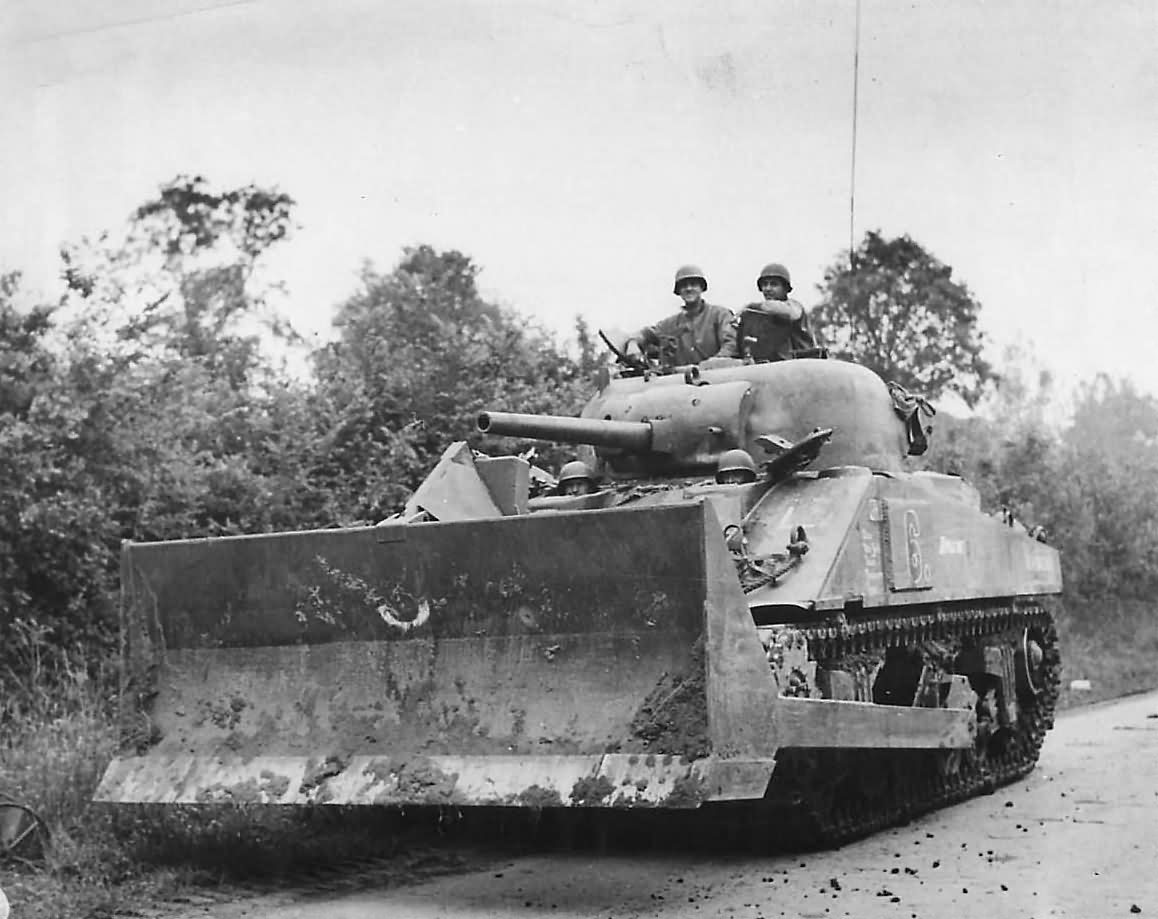The M1 Tank-Dozer played a crucial role in overcoming the formidable obstacles that the Germans had placed on the Normandy beaches in anticipation of the Allied invasion during World War II. These tank-dozers were essentially Sherman tanks equipped with a dozer blade, allowing them to perform a variety of engineering tasks under combat conditions.
Development and Design
Origin and Need for a Tank-Dozer:
- In early 1944, as part of their defensive preparations, German forces began constructing extensive obstacle belts along potential Allied landing beaches, including the Normandy coast. These obstacles included anti-tank ditches, wooden posts, metal stakes (known as “Rommel’s Asparagus”), and large concrete barriers, all designed to hinder or prevent the landing of Allied vehicles.
- The US Army Engineer Board, aware of the need to breach these obstacles during an amphibious assault, began exploring solutions in March 1943. Their conclusion was that a tank equipped with a dozer blade was the most versatile and effective tool for the job, capable of clearing obstacles, filling in anti-tank ditches, and even constructing makeshift roads in rough terrain.
Standardization and Production:
- The LaPlant-Choate Company developed a dozer blade that could be mounted on a standard medium tank, specifically the Sherman. This led to the standardization of the design as the Medium Tank-Dozer M1 on March 5, 1944. The US Army quickly recognized the value of this equipment and authorized the production of 500 dozer kits.
- Production began on April 10, 1944, with a planned output of 40 kits per week. These kits could be mounted on Sherman tanks, transforming them into tank-dozers capable of performing both combat and engineering roles.
Deployment and Use in Operation Neptune (D-Day)
British and American Adoption:
- The British Army, facing similar challenges from the German obstacles, also recognized the need for tank-dozers. On March 4, 1944, General Bernard Montgomery requested the urgent acquisition of Sherman tank-dozers from the US, noting that existing British armored bulldozers could not be sufficiently armored to operate effectively under fire.
- The British War Office categorized this request as an emergency, emphasizing the critical role these tank-dozers would play in the success of Operation Overlord. However, despite the high demand, production limitations meant that only a limited number of M1 tank-dozers were available in time for D-Day.
Deployment on D-Day:
- A total of 70 M1 tank-dozers were allocated to the European Theater of Operations (ETOUSA) from the initial production batches. These tank-dozers began arriving in Britain in April 1944, but due to their late arrival and the small number produced, only a modest deployment was possible during the initial landings.
- On D-Day, June 6, 1944, 16 M1 tank-dozers were deployed on Omaha Beach and 8 on Utah Beach. These dozers were instrumental in clearing obstacles under heavy fire, allowing Allied troops and vehicles to move inland from the beaches. However, the British forces did not receive any M1 tank-dozers in time for the landings and instead relied on armored D7 bulldozers and other improvised methods, such as using AVREs to push or tow obstacles out of the way.
The M1 Tank-Dozer was a vital piece of equipment that contributed to the success of the Normandy landings, particularly in overcoming the extensive and well-prepared German defenses. Its versatility and the ability to operate under fire made it an essential tool for the engineers and tank crews working to breach the German defenses. Although only a limited number were available on D-Day, their presence was critical in ensuring that Allied forces could quickly establish a foothold on the heavily fortified beaches of Normandy.
